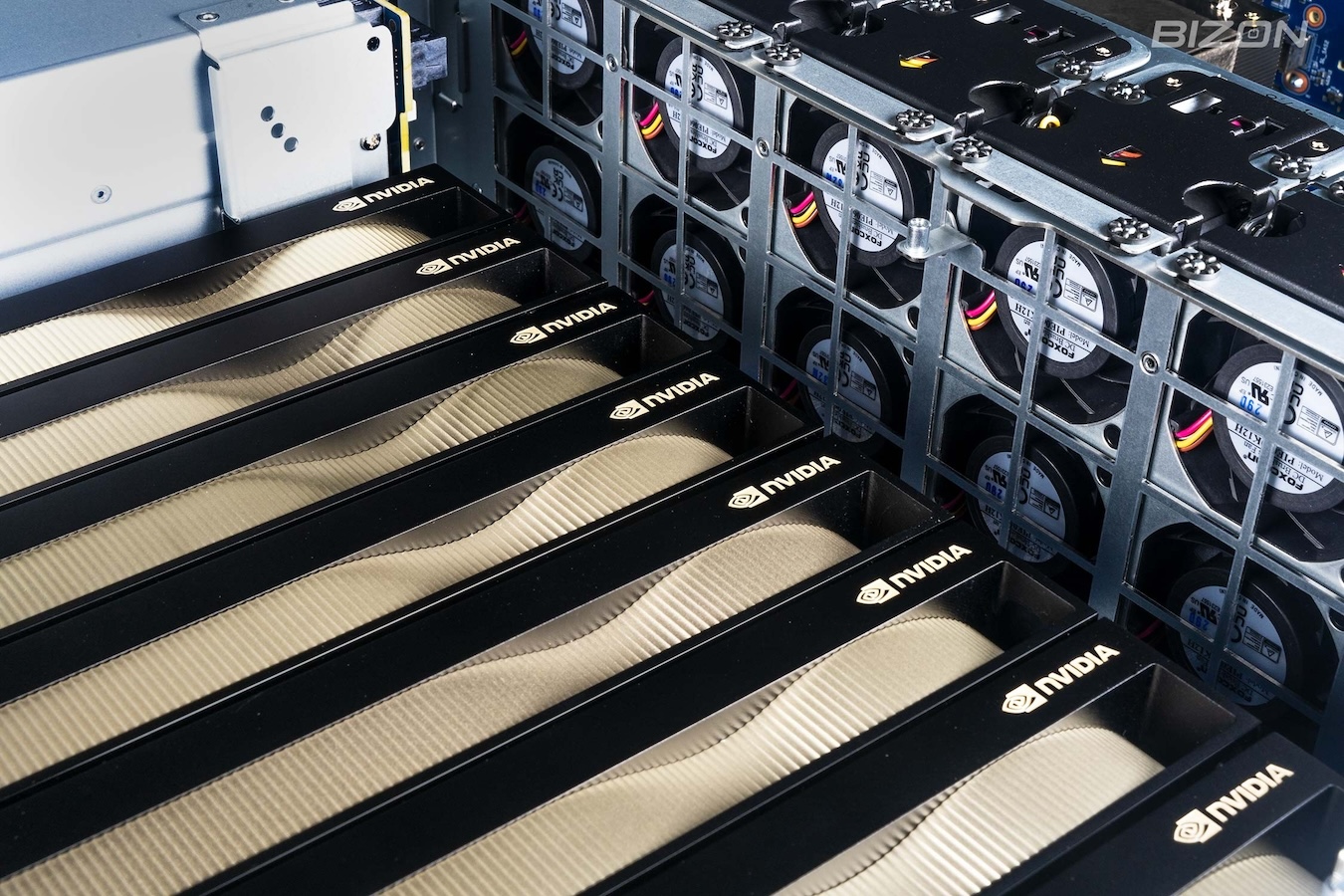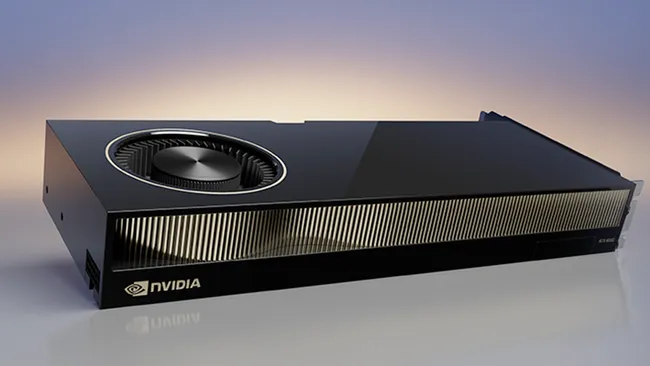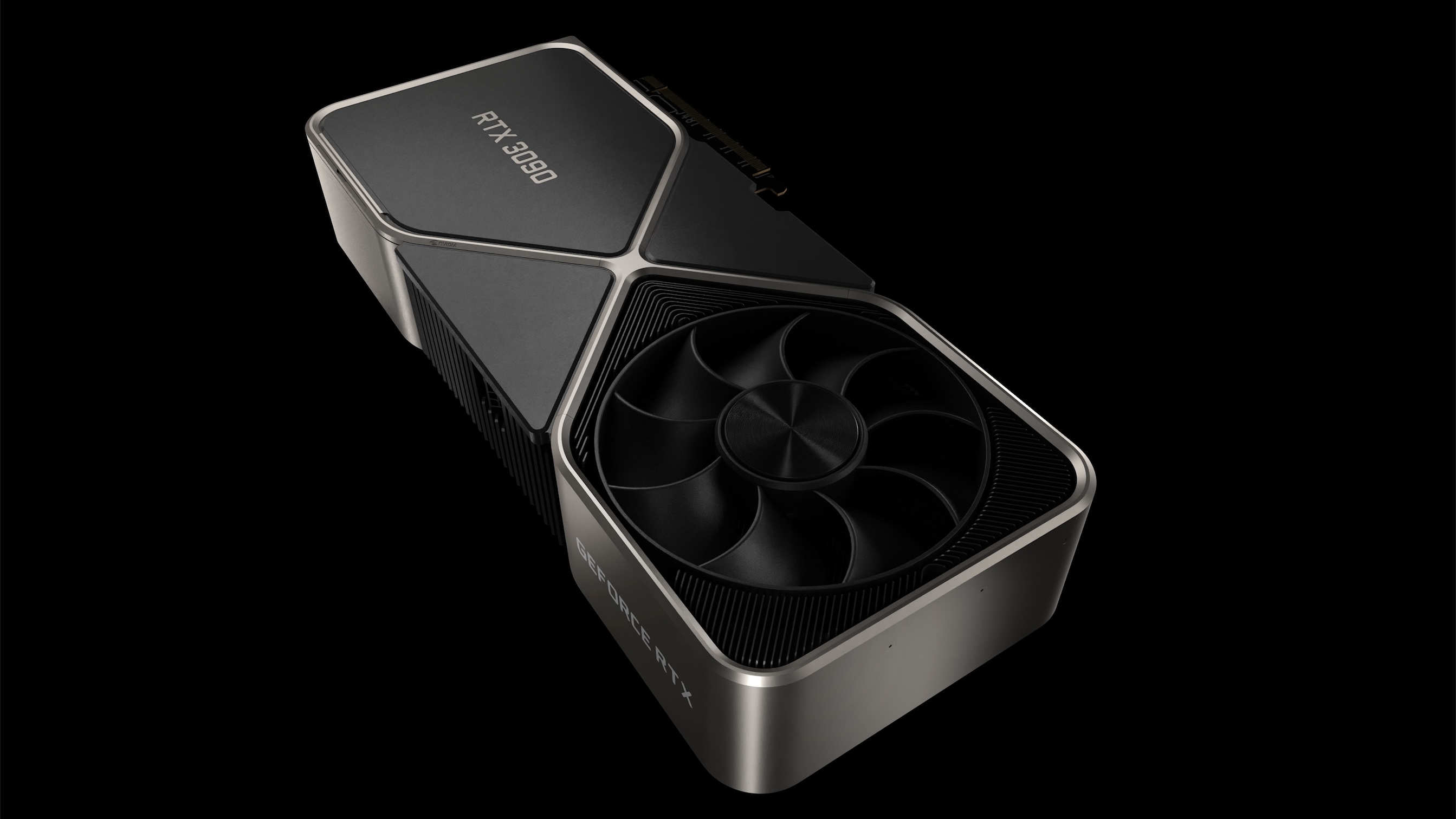Table of Contents
- Introduction
- Best CPU for Molecular Dynamics in 2024
- Best GPU for Molecular Dynamics in 2024
- Best GPU for AMBER in 2024
- Best GPU for GROMACS in 2024
- Best GPU for NAMD in 2024
- Multi-GPU Setups for AMBER, GROMACS, NAMD
- Advantages of Purpose-Built Workstations and Servers from BIZON
- Current Capabilities and Applications
- Conclusion
Best CPU, GPU, RAM for Molecular Dynamics in 2025 [ Updated ]
Introduction
Molecular dynamics (MD) simulations are pivotal in the fields of computational chemistry, biophysics, and materials science, enabling researchers to study the physical movements of atoms and molecules over time. These simulations require intensive computational resources to accurately model complex interactions at the atomic level. As the complexity and size of molecular systems increase, the demand for high-performance computing hardware becomes critical to achieve realistic simulations and meaningful results.
Selecting the right combination of CPU, GPU, and RAM is essential for optimizing the performance of MD simulations. This guide focuses on identifying the best hardware configurations that maximize computational efficiency and reduce runtime, particularly when dealing with extensive molecular models and long simulation periods. We will explore top-tier CPUs and GPUs, with a special emphasis on the latest NVIDIA GPUs such as the RTX 4090, RTX 6000 Ada, and RTX 5000 Ada, which have proven to be game-changers in the realm of scientific computing.

Additionally, the choice of infrastructure for deploying these simulations cannot be overlooked. BIZON workstations and servers optimized for Molecular dynamics (MD) simulations, equipped with these powerful NVIDIA GPUs, offer bespoke configurations that are tailor-made for high-throughput computing tasks like molecular dynamics. The advantages of BIZON systems include:
- Customization: Each workstation and server can be customized to meet specific computational needs, ensuring that every component is optimized for the best performance in MD simulations.
- Scalability: With options to equip multiple GPUs, expand memory capacity, and scale processing power, BIZON systems can grow with your research demands, offering flexibility and future-proofing investments.
- Reliability: BIZON's workstations and servers are built with industrial-grade components that ensure reliability and stability, even under continuous high-load conditions typical in scientific computations.
- Support: Comprehensive technical support from BIZON helps mitigate any potential downtimes, allowing researchers to maintain continuous productivity without technical interruptions.
This article aims to guide you through the intricacies of hardware selection for molecular dynamics, helping you understand why certain GPUs excel with specific software like AMBER, NAMD and GROMACS, and the distinct advantages BIZON's workstations and servers provide to the scientific community.
Best CPU for Molecular Dynamics in 2024
For molecular dynamics workloads, the key factor when selecting a CPU is to prioritize processor clock speeds over the core count. While having a sufficient number of cores is important, the speed at which a CPU can deliver instructions to other components of the system is crucial. A processor with too many cores, like a 96-core Threadripper PRO 7995WX, might lead to some cores being underutilized.
A well-suited choice would be a mid-tier workstation CPU with a balance of higher base and boost clock speeds, like the last generation AMD Threadripper PRO 5995WX. This is particularly advantageous if your workload demands more cores, as seen in software like NAMD and GROMACS. Additionally, dual CPU setups, available with data center CPUs like AMD EPYC and Intel Xeon Scalable, can be considered for workloads requiring even more cores.
Remember, the choice between a top-tier consumer CPU and a mid-tier workstation or data center CPU also involves considerations of RAM capacity and PCIe lanes. This is essential if your system needs to accommodate multiple GPUs or other accelerators for maximum performance or handling multiple jobs.
- AMD Ryzen Threadripper: High core count, excellent for parallel computations.
- Intel Xeon Scalable Processors: Optimized for data centers, offering robust multi-threading capabilities.
Best GPU for Molecular Dynamics in 2024

Graphics Processing Units (GPUs) are pivotal in accelerating molecular dynamics simulations. They are particularly useful in offloading computationally intensive tasks from CPUs. NVIDIA's latest offerings, including the RTX 4090, RTX 6000 Ada, and RTX 5000 Ada, are particularly notable.
NVIDIA RTX 4090
Architecture: Built on the Ada Lovelace architecture, it features new Streaming Multiprocessors that increase the throughput and efficiency of tensor operations critical for MD simulations.
CUDA Cores: It comes with 16,384 CUDA cores which provide massive parallel processing power.
Memory: Comes with 24 GB of GDDR6X VRAM, which is capable of handling large datasets typical in molecular simulations.
NVIDIA RTX 6000 Ada
Architecture: Shares the same Ada Lovelace architecture with enhanced Ray Tracing Cores and Tensor Cores optimized for scientific computing.
CUDA Cores: Includes 18,176 CUDA cores, supporting high-performance needs.
Memory: Equipped with 48 GB of GDDR6 VRAM, this GPU is ideal for the most memory-intensive simulations.
NVIDIA RTX 5000 Ada
Architecture: Also based on the Ada Lovelace architecture.
CUDA Cores: Fewer CUDA cores than the RTX 6000 Ada at approximately 10,752 but still very capable.
Memory: Contains 24 GB of GDDR6 VRAM, sufficient for large-scale simulations that require extensive data handling.
For general molecular dynamics, the RTX 4090 offers a good balance of price and performance with substantial raw processing capabilities. However, for professionals and researchers who require more robust memory capabilities and can utilize the additional cores effectively, the RTX 6000 Ada stands out as the superior choice.
Best GPU for AMBER in 2024
AMBER, one of the leading molecular dynamics software, is particularly optimized for NVIDIA GPUs. The RTX 6000 Ada, with its extensive memory and powerful processing capabilities, is ideal for running large-scale simulations in AMBER. Its ability to manage large complex systems with extensive particle counts makes it a top recommendation.

- NVIDIA RTX 6000 Ada: 48 GB of GDDR6 VRAM, ideal for large-scale simulations.
- NVIDIA RTX 4090: 24 GB of GDDR6X VRAM, a cost-effective option for smaller simulations.
- NVIDIA RTX 5000 Ada: Balanced performance for standard simulations.
These findings highlight that both the RTX 4090 and RTX 6000 ADA are robust options for AMBER molecular dynamics simulations, offering efficient and powerful computational capabilities for a range of system sizes and compositions.
Best GPU for GROMACS in 2024
GROMACS is another popular MD software that benefits significantly from high GPU throughput. The RTX 4090, with its high CUDA core count and superior tensor performance, makes it an excellent choice for GROMACS. It provides the necessary computational power to facilitate rapid molecular simulation cycles.
- NVIDIA RTX 4090: Highest CUDA core count, best for computationally intensive simulations.
- NVIDIA RTX 6000 Ada: More suitable for complex setups that require extra VRAM.
- NVIDIA RTX 5000 Ada: Economical choice for many users.
Best GPU for NAMD in 2024
NAMD is widely recognized for its performance optimization with NVIDIA GPUs. Selecting the right GPU can significantly enhance simulation times and enable more complex scientific investigations. Here are the best GPUs for running NAMD:
NVIDIA RTX 4090
Architecture: The RTX 4090 is engineered on NVIDIA's Ada Lovelace architecture, offering unprecedented computational efficiencies with new Streaming Multiprocessors and enhanced tensor cores optimized for acceleration of scientific computations.
CUDA Cores: With 16,384 CUDA cores, this GPU provides unparalleled parallel processing capabilities, ideal for the demanding workloads of NAMD.
Memory: It features 24 GB of GDDR6X VRAM, ample for handling complex simulations that involve large biological molecules or extensive chemical compounds.
NVIDIA RTX 6000 Ada
Architecture: This GPU also utilizes the Ada Lovelace architecture, with improvements in Ray Tracing Cores and Tensor Cores which are beneficial for molecular dynamics simulations.
CUDA Cores: Equipped with 18,176 CUDA cores, the RTX 6000 Ada supports extremely high computational demands, making it suitable for professional and academic research environments.
Memory: The inclusion of 48 GB of GDDR6 VRAM makes it an excellent choice for the largest and most complex simulations, providing substantial headroom for extensive data sets.
NVIDIA RTX 5000 Ada
Architecture: Sharing the Ada Lovelace architecture, the RTX 5000 Ada is tailored for high efficiency and reliability in prolonged scientific computations.
CUDA Cores: It has around 10,752 CUDA cores, offering a robust balance between performance and power consumption, suitable for a wide range of molecular dynamics tasks.
Memory: With 24 GB of GDDR6 VRAM, this GPU can adeptly manage sizable simulations, though it is the more budget-friendly option among the high-end NVIDIA cards.
Multi-GPU Setups for AMBER, GROMACS, NAMD
Utilizing multi-GPU systems in molecular dynamics simulations with AMBER, GROMACS, and NAMD can dramatically enhance computational efficiency and decrease simulation times. This section explores the advantages of deploying multiple GPUs in these scientific applications, the types of multi-GPU configurations available, and how they benefit specific molecular dynamics tasks.
Advantages of Multi-GPU Configurations
Multi-GPU systems leverage the power of parallel processing to handle the complex and computationally intensive tasks associated with molecular dynamics simulations. The key benefits include:
- Increased Throughput: Parallel GPU setups can significantly accelerate data processing rates, allowing for more simulations in less time.
- Enhanced Scalability: As simulation complexity increases, additional GPUs can be added to handle the load, making the system adaptable to growing research needs.
- Improved Efficiency: Distributing the workload across multiple GPUs can optimize resource utilization and reduce energy consumption per simulation.
AMBER is well-optimized for use with multiple NVIDIA GPUs. Utilizing GPUs like the NVIDIA RTX 6000 Ada in a multi-GPU configuration allows AMBER to conduct more extensive and complex simulations with increased accuracy and reduced time frames.
GROMACS supports multi-GPU execution, enabling it to benefit greatly from systems equipped with several GPUs. For example, using multiple NVIDIA RTX 4090 GPUs can provide the necessary computational power to simulate large molecular systems or carry out multiple runs simultaneously.
NAMD can efficiently distribute its computation across multiple GPUs, making it ideal for a multi-GPU setup. This distribution allows for faster processing times and the ability to handle larger system sizes, which is crucial for detailed molecular analysis.
Advantages of Purpose-Built Workstations and Servers from BIZON
BIZON specializes in custom-built workstations and servers that are optimized for specific computational tasks, including molecular dynamics simulations.
BIZON workstations come pre-installed with molecular dynamics frameworks for every stage of research. BIZON systems integrate the latest NVIDIA GPUs and are designed to maximize computational efficiency and reliability:
- Optimized Configuration: Each system is tailored to leverage the full potential of its components, ensuring that GPU and CPU capabilities are perfectly matched.
- Cooling and Power: High-performance simulations generate substantial heat and require robust power supplies. BIZON systems are equipped with advanced cooling technologies and power management to maintain stability and performance.
- Expert Technical Support: BIZON provides comprehensive technical support by in-house engineers, which is crucial for maintaining high-performance computing systems.
Recommended GPU workstations and servers:
- BIZON X5500 Workstation: NVIDIA GPUs Optimized for high performance and efficiency.
- BIZON X7000 Server: Equipped with up to 8x NVIDIA GPUs to handle extensive computational demands.
Current Capabilities and Applications
The current landscape of molecular dynamics (MD) simulations is characterized by an impressive array of capabilities, largely attributable to the advancements in High-Performance Computing (HPC) and NVIDIA GPUs. Today's computational power allows for the simulation of complex molecular systems with a level of detail and accuracy that was previously unattainable. This has opened up new frontiers in various research areas and industries.
One significant area of application is in the field of drug discovery and pharmaceuticals. Researchers can now simulate drug interactions with proteins at a molecular level, leading to a more efficient drug design process and a better understanding of drug efficacy and safety. Similarly, in materials science, MD simulations assist in the design of new materials with desired properties, from high-strength composites to novel nanomaterials.
Another critical application is in the realm of biophysics and biochemistry, where simulations provide insights into biological processes at the molecular level. This includes understanding the mechanisms of enzymes, protein folding, and DNA interactions, which are crucial for advancements in genetics and molecular biology.
Commonly used software and tools in this domain have evolved to leverage the power of NVIDIA GPUs. Software packages like GROMACS, AMBER, and LAMMPS have been optimized for GPU acceleration, significantly enhancing their performance and efficiency. These tools enable scientists to conduct MD simulations with larger systems and longer time scales, pushing the boundaries of molecular research.
The integration of HPC and NVIDIA GPUs in MD simulations not only accelerates the computational process but also enables more accurate and predictive simulations. This has a profound impact on both theoretical research and practical applications, paving the way for discoveries and innovations across multiple scientific disciplines.
Conclusion
Selecting the right hardware is crucial for efficient molecular dynamics simulations. Advanced CPUs like AMD's Ryzen Threadripper and Intel’s Xeon, along with NVIDIA's latest GPUs (RTX 4090, RTX 6000 Ada, and RTX 5000 Ada), provide necessary computational power. Paired with adequate RAM and specialized systems from BIZON, these setups help enhance the speed and accuracy of molecular dynamics simulations, ensuring researchers and professionals can achieve their computational goals effectively.
BIZON's Molecular Dynamics Workstations & Servers showcases a range of custom workstations and servers specifically designed to optimize molecular dynamics simulations.
BIZON workstations come pre-installed with molecular dynamics frameworks for every stage of research. From BIZON X5500 to BIZON G9000, these systems are tailored to harness the power of HPC and NVIDIA GPUs, ensuring that researchers and scientists have access to the necessary computational prowess right at their fingertips. Our solutions are not just about providing raw power; they also offer scalability, reliability, and efficiency, crucial for the intensive computational tasks inherent in MD simulations. This focus on specialized, high-performance computing hardware democratizes access to state-of-the-art technology, enabling a wider range of institutions and researchers to participate in groundbreaking scientific discovery and innovation in fields ranging from pharmacology to materials science.